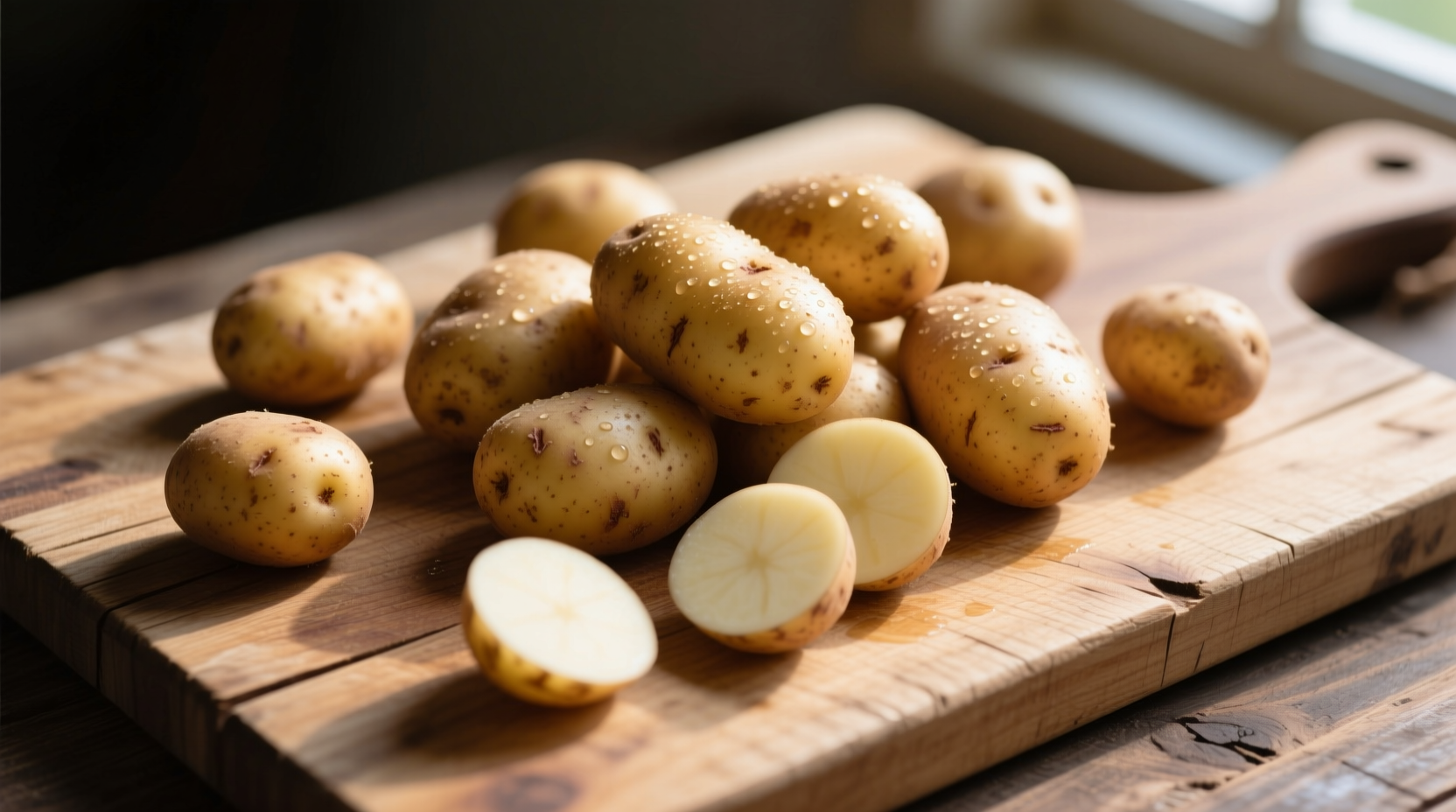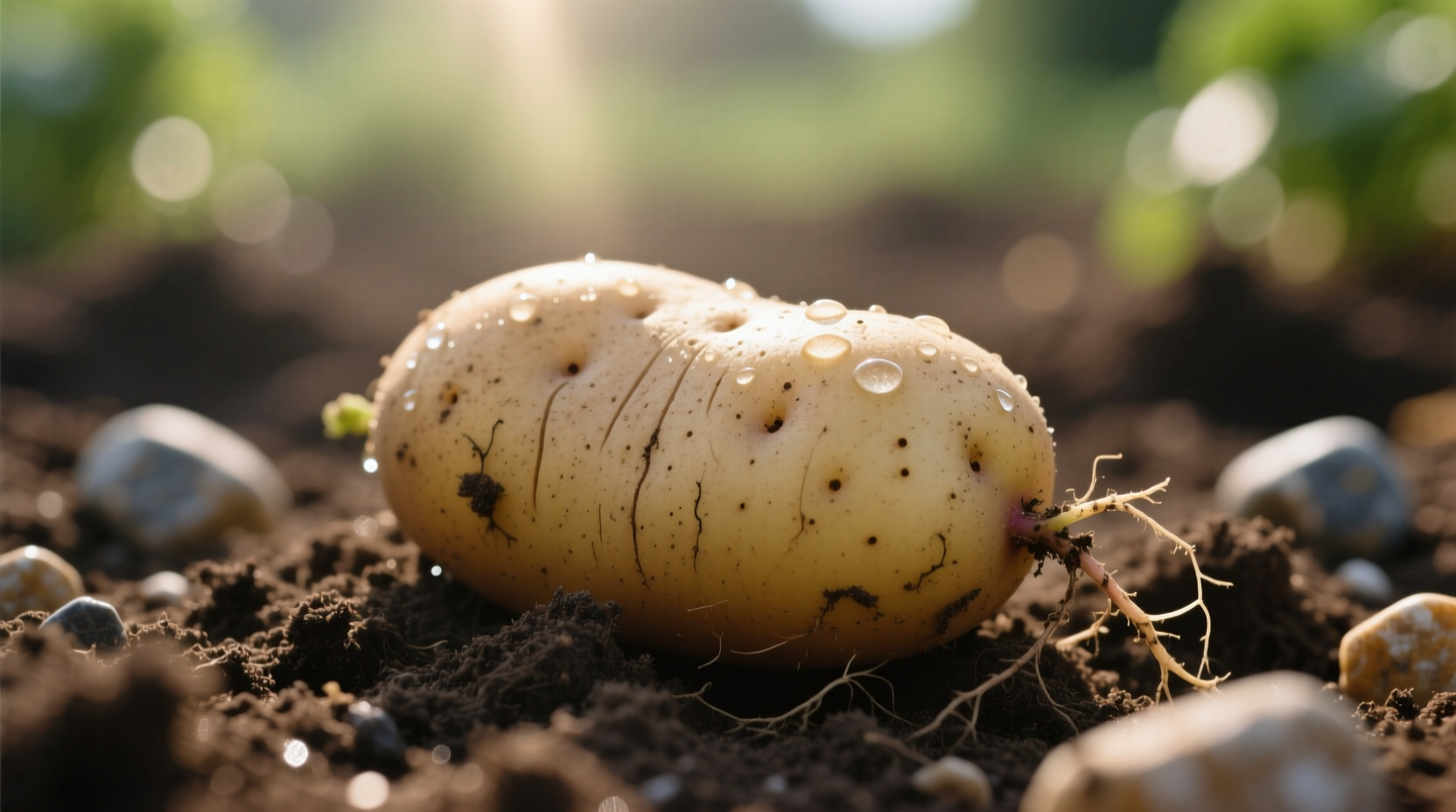Why Fingerling Potatoes Deserve a Spot in Your Kitchen
Discover how these slender, nutrient-packed potatoes can transform your meals with minimal effort. Unlike standard varieties, fingerlings deliver complex flavor in just 25 minutes of cooking time while providing essential nutrients that support heart health and digestion. Chefs consistently choose them for restaurant dishes because they hold their shape perfectly and absorb flavors beautifully.

What Exactly Are Fingerling Potatoes?
Fingerling potatoes represent a distinct category of mature potatoes characterized by their small size (typically 2-6 inches long), elongated shape, and smooth, thin skin. Despite common misconception, they're not "baby" potatoes but rather fully mature varieties that naturally grow in this distinctive form. Originating from the Andes mountains in South America, these potatoes have been cultivated for centuries before gaining popularity in North American and European kitchens during the late 20th century.
| Variety | Skin Color | Flesh Color | Best Cooking Method | Flavor Profile |
|---|---|---|---|---|
| Russian Banana | Yellow-gold | Yellow | Roasting, Grilling | Nutty, buttery |
| French Fingerling | Rosy red | White | Boiling, Salads | Earthy, delicate |
| Austrian Crescent | Yellow | Yellow | Steaming, Sautéing | Sweet, complex |
| Keuka Gold | Golden | Golden | All-purpose | Creamy, mild |
Selecting the Perfect Fingerlings at the Market
When choosing fingerling potatoes, look for firm specimens with smooth, unblemished skin and no soft spots or green discoloration. The ideal fingerling should feel dense for its size, indicating proper moisture content. Avoid potatoes with sprouts or shriveled appearance, which signal age and moisture loss. At farmers' markets, ask growers about harvest dates—recently harvested fingerlings (within 1-2 weeks) deliver superior texture and flavor compared to older stock.
Proper Storage for Maximum Freshness
Store fingerling potatoes in a cool, dark place with good ventilation—never in the refrigerator, which converts starches to sugars and creates off-flavors. A paper bag in a pantry maintains optimal humidity (90-95%) while allowing airflow. Properly stored, they'll stay fresh for 2-3 weeks. Never wash potatoes before storage, as moisture accelerates spoilage. If you notice slight sprouting, simply remove sprouts and use promptly.
Cooking Techniques That Highlight Their Unique Qualities
Fingerling potatoes shine when cooked whole or halved lengthwise. Their dense structure makes them ideal for high-heat methods:
- Roasting: Toss with olive oil, rosemary, and garlic at 400°F (200°C) for 25-30 minutes until golden and tender
- Grilling: Parboil first, then grill over medium heat for 8-10 minutes, turning occasionally
- Poaching: Simmer in salted water with herbs for 15-20 minutes for perfect salad potatoes
Avoid mashing fingerlings—their low starch content (15-18% compared to russets' 20-22%) results in a gluey texture. Instead, try them in potato salads where they maintain distinct shape while absorbing dressings beautifully.
Nutritional Benefits Backed by Science
According to USDA nutritional data, a 5-ounce serving of fingerling potatoes provides 260mg of potassium (7% of daily value), 2.5g of fiber, and 20mg of vitamin C. Research from the Oregon State University Extension Service confirms that fingerlings contain higher concentrations of carotenoids than standard white potatoes, contributing to their vibrant yellow flesh and antioxidant properties. Their lower glycemic index (78 vs. russets' 85) makes them a better option for blood sugar management.
When Fingerlings Outperform Other Potatoes
Fingerling potatoes excel in specific culinary situations where other varieties fall short:
- Salads: Maintain shape after cooking where waxy potatoes might become mushy
- Grilling: Resist falling apart on the grill better than round varieties
- Special occasions: Their elegant shape creates visually appealing presentations
- Quick meals: Cook 25% faster than larger potatoes due to size
However, they're not ideal for dishes requiring fluffy texture like mashed potatoes or for long炖ing where their dense structure might remain undercooked.
Simple Recipe Ideas for Everyday Cooking
Transform fingerlings into impressive dishes with minimal effort:
- Weeknight Dinner: Toss roasted fingerlings with lemon zest, chopped parsley, and flaked salmon
- Brunch: Pan-fry halved fingerlings with onions and bell peppers for potato hash
- Cold Weather: Simmer in broth with leeks and herbs for rustic soup
- Entertaining: Layer with goat cheese and caramelized onions for elegant gratin
Avoid These Common Fingerling Potato Mistakes
Even experienced cooks make these errors with fingerlings:
- Peeling them: Their thin skin contains valuable nutrients and texture—scrub instead
- Overcrowding the pan: Leads to steaming instead of browning—use single layer
- Cooking at too low temperature: Results in soggy exterior—aim for at least 375°F (190°C)
- Seasoning too early: Salt draws out moisture—add during last 10 minutes of cooking
Seasonal Availability and Sourcing Tips
Fingerling potatoes typically reach peak season from August through October, though availability varies by region. In North America, look for them at farmers' markets from mid-summer to early fall. Specialty grocery stores often carry them year-round, though winter offerings may come from South American growers. When selecting, choose uniform sizes for even cooking and ask about growing methods—fingerlings grown in sandy soil develop better flavor and texture.











 浙公网安备
33010002000092号
浙公网安备
33010002000092号 浙B2-20120091-4
浙B2-20120091-4